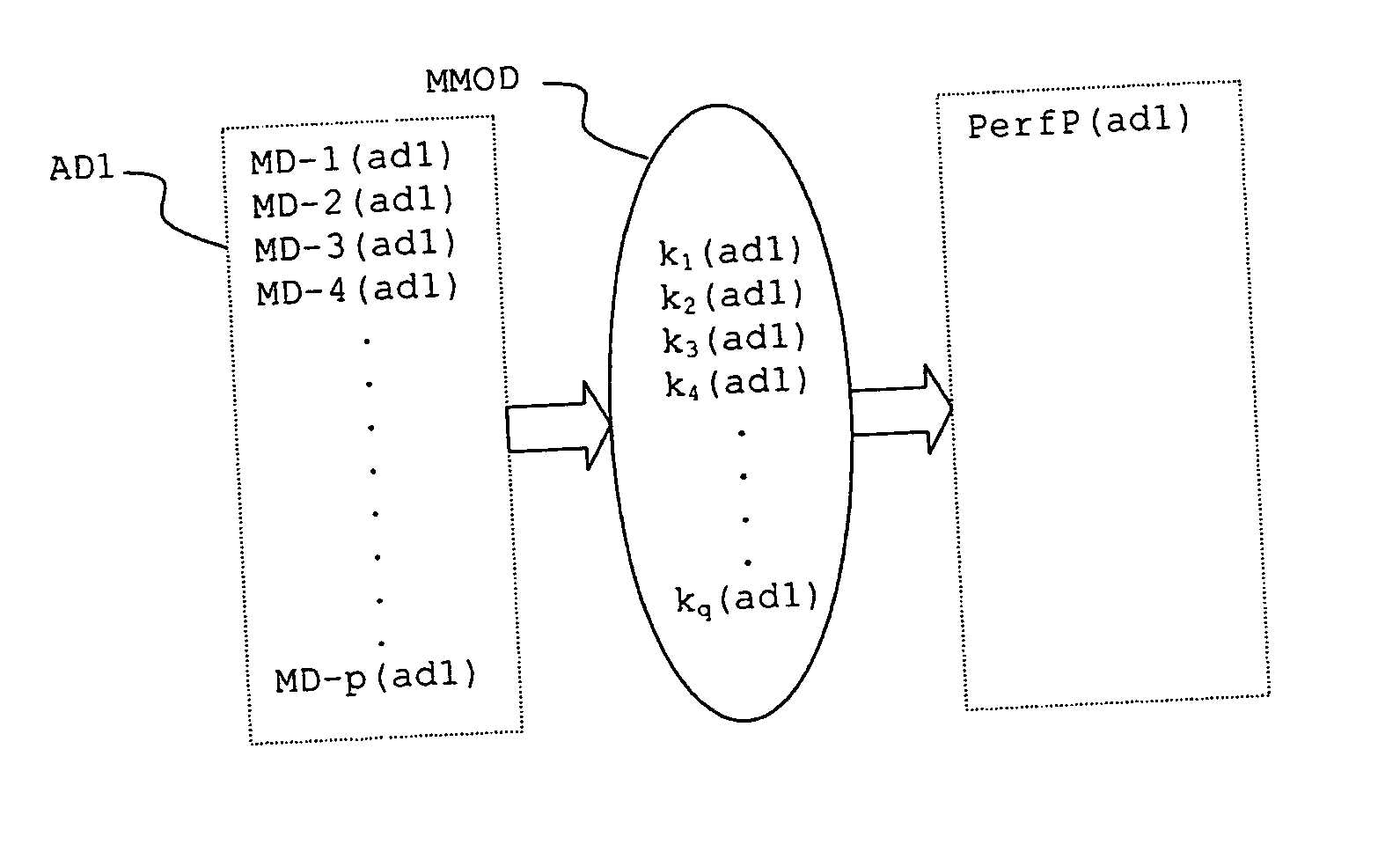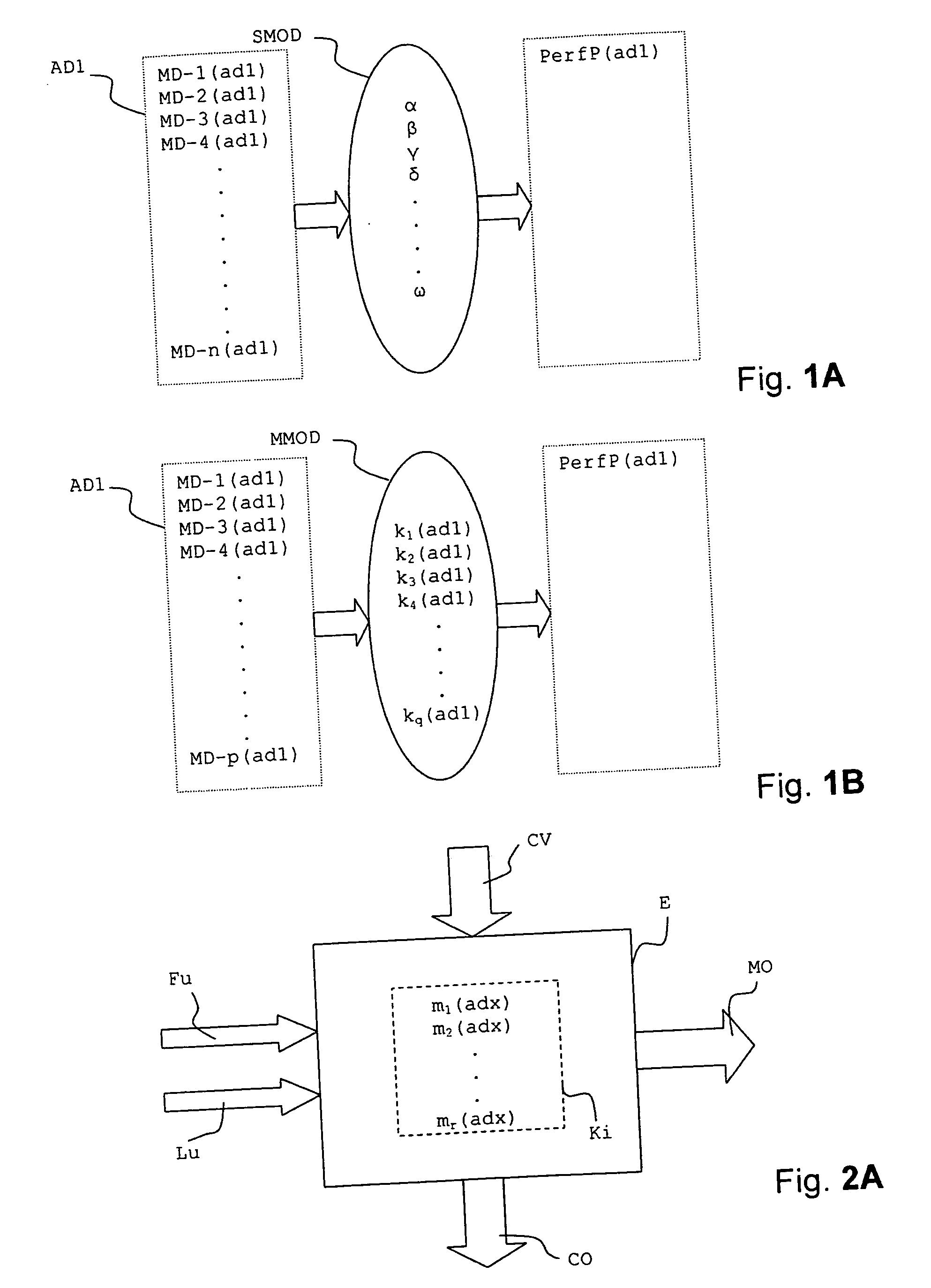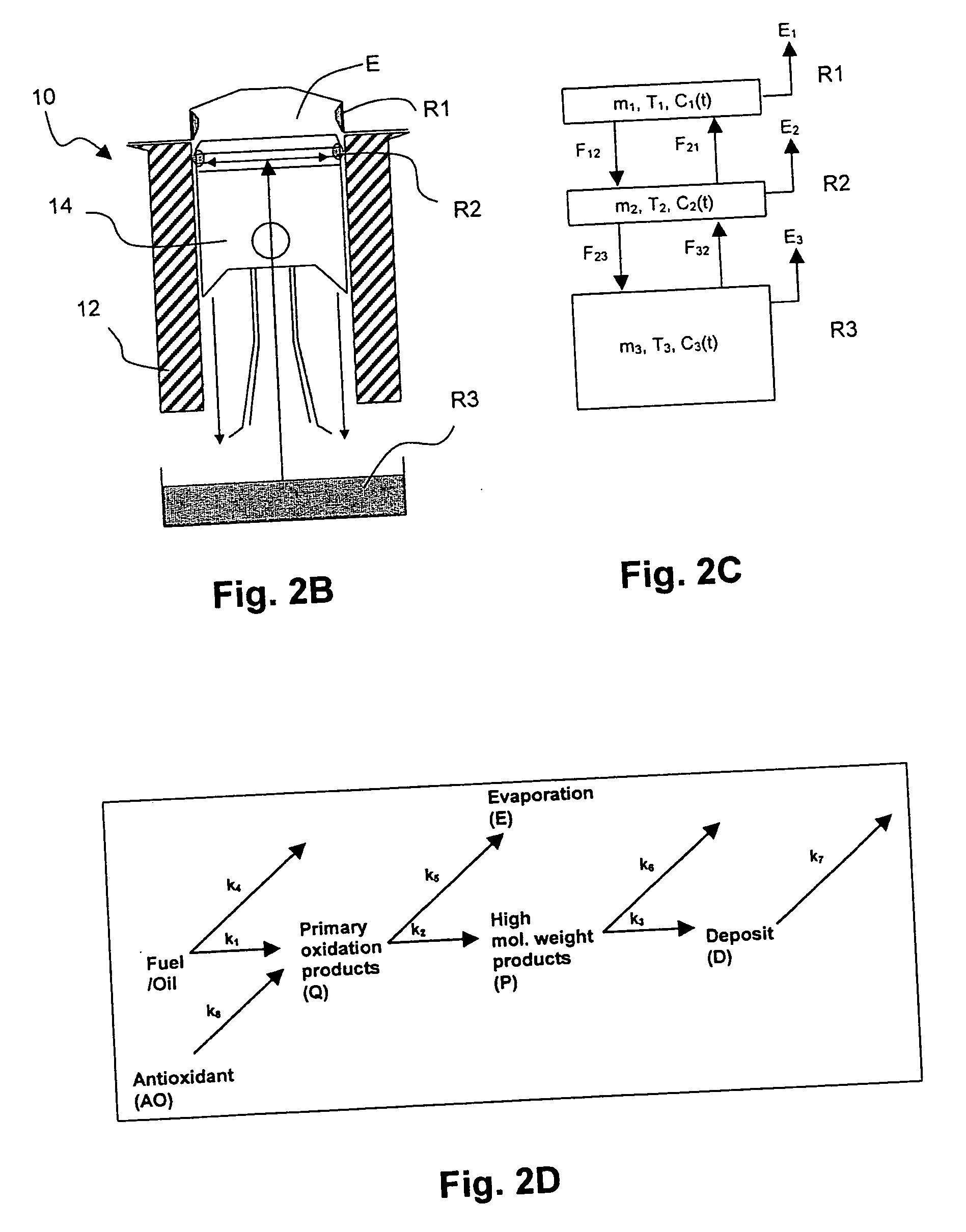Predictive technologies for lubricant development
a technology of lubricant and development technology, applied in chemical methods analysis, material testing goods, instruments, etc., can solve the problems of lubricant-material compatibility and durability issues, difficult to ascertain the kind of lubricant needed to achieve satisfactory performance, and high cost and time-consuming undertaking of new engine developmen
- Summary
- Abstract
- Description
- Claims
- Application Information
AI Technical Summary
Benefits of technology
Problems solved by technology
Method used
Image
Examples
Embodiment Construction
[0045] In the drawings, like reference numerals refer to like elements.
[0046]FIG. 1A illustrates a prior art method for determining a functional relation between a first additive AD1 and a corresponding performance parameter value PerfP(ad1). The first additive AD1, i.e. a molecule having a molecular structure to be added to another composition, is described by a number of molecular parameters known in the art as molecular descriptors MD-1(ad1)-MD-n(ad1). The number (n) of the molecular descriptors MD used in the method may be selected by a user, possibly depending on statistical or technical considerations.
[0047] A statistical model SMOD comprises a number of statistical model parameters α-ω. Based primarily on mathematical considerations, the statistical model SMOD comprises a number of equations comprising the statistical model parameters α-ω. In order to determine a value for each of the statistical model parameters α-ω, a training set of additives, e.g. comprising the first a...
PUM
 Login to View More
Login to View More Abstract
Description
Claims
Application Information
 Login to View More
Login to View More - R&D
- Intellectual Property
- Life Sciences
- Materials
- Tech Scout
- Unparalleled Data Quality
- Higher Quality Content
- 60% Fewer Hallucinations
Browse by: Latest US Patents, China's latest patents, Technical Efficacy Thesaurus, Application Domain, Technology Topic, Popular Technical Reports.
© 2025 PatSnap. All rights reserved.Legal|Privacy policy|Modern Slavery Act Transparency Statement|Sitemap|About US| Contact US: help@patsnap.com



